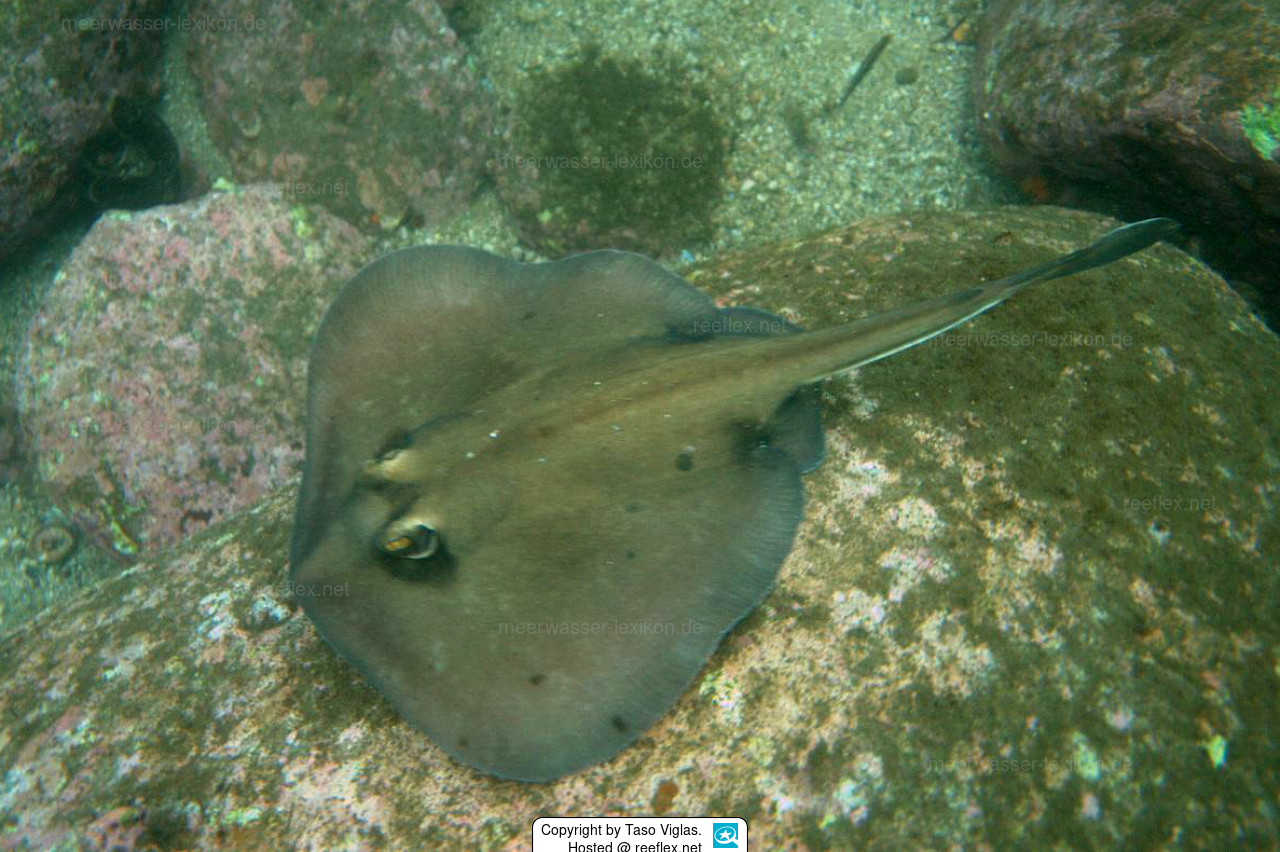Info
The Kapala stingray lives exclusively in the waters of eastern Australia, with a clear focus off New South Wales in the somewhat cooler Tasman Sea.
Urolophus kapalensis is a uniform greenish-brown stingray with dark, mask-like markings around the eyes, dark spots over the bases of the pelvic fins, a light caudal fin with a dark edge and a small dorsal fin and tail folds.
Animals in the juvenile phase have a dark caudal fin.
Caution:
As the ray also occurs in water depths accessible to divers or snorkelers, caution is advised!
The poisonous, serrated sting on the tail can cause extremely painful injuries!
%lat can be distinguished from the banded stingray (Urolophus cruciatus) by a dark stripe along the midline behind the eyes, while the central stripe of Urolophus cruciatus extends to the front of the eyes.
Etymology:
The species is named after the N.S.W. Fisheries Research Institute's FRV Kapala, which collected the holotype, in honor of the “extremely valuable fish collections made by the vessel over nearly three decades.”
Urolophus kapalensis is a uniform greenish-brown stingray with dark, mask-like markings around the eyes, dark spots over the bases of the pelvic fins, a light caudal fin with a dark edge and a small dorsal fin and tail folds.
Animals in the juvenile phase have a dark caudal fin.
Caution:
As the ray also occurs in water depths accessible to divers or snorkelers, caution is advised!
The poisonous, serrated sting on the tail can cause extremely painful injuries!
%lat can be distinguished from the banded stingray (Urolophus cruciatus) by a dark stripe along the midline behind the eyes, while the central stripe of Urolophus cruciatus extends to the front of the eyes.
Etymology:
The species is named after the N.S.W. Fisheries Research Institute's FRV Kapala, which collected the holotype, in honor of the “extremely valuable fish collections made by the vessel over nearly three decades.”







 Dr. Taso Viglas, Australien
Dr. Taso Viglas, Australien








